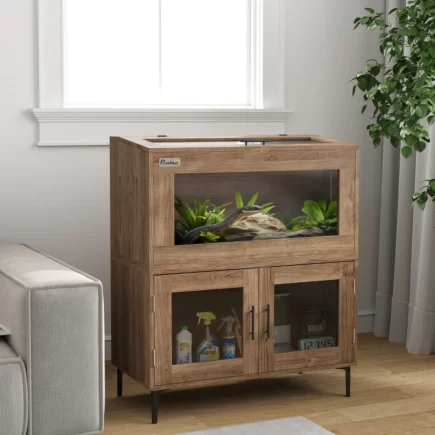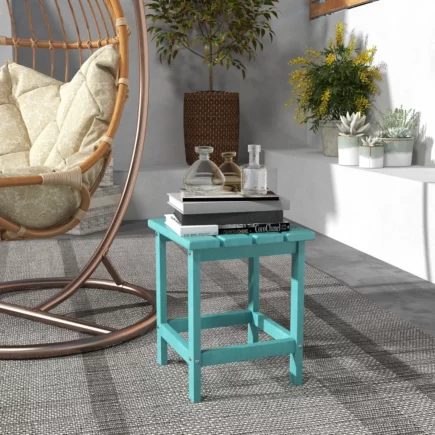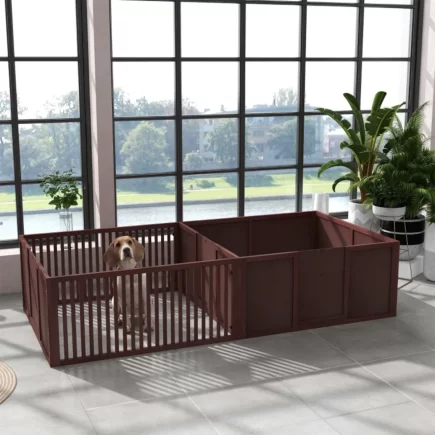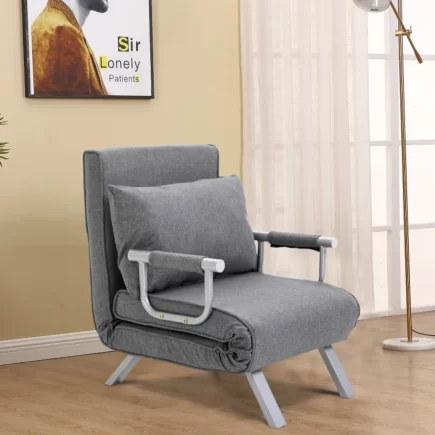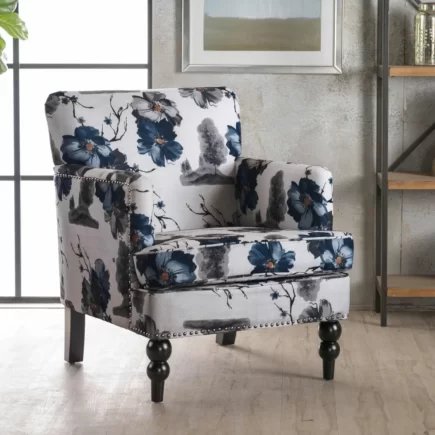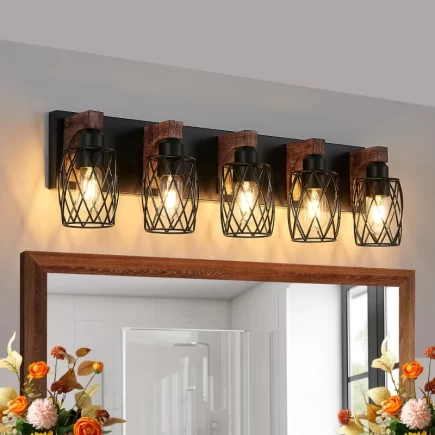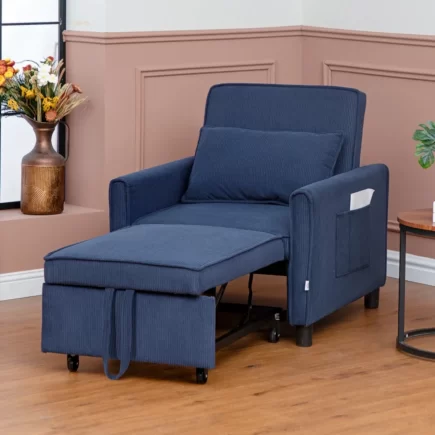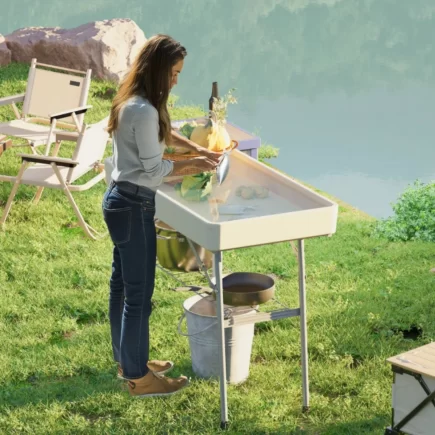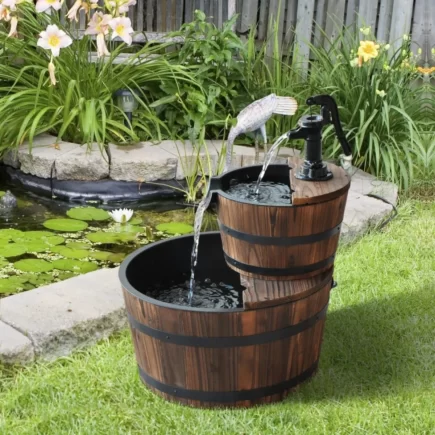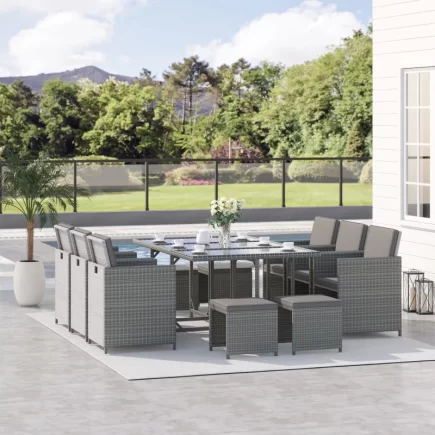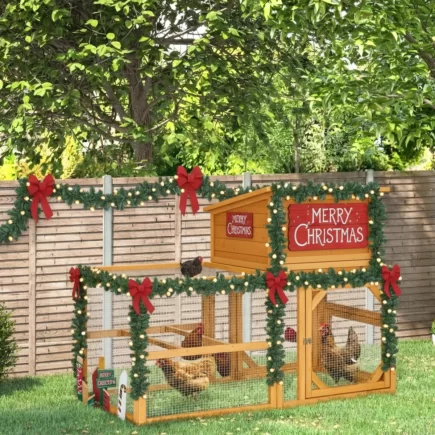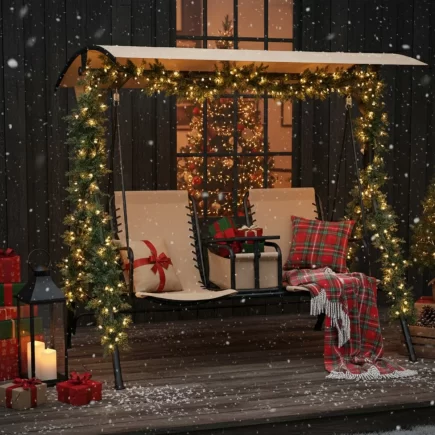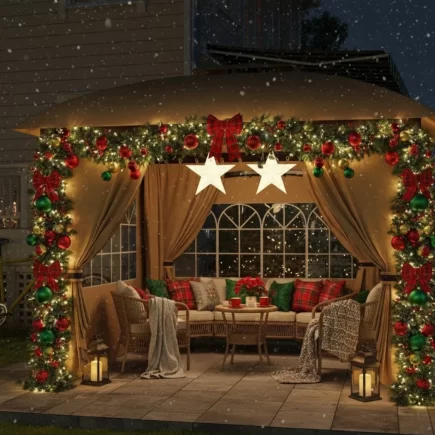Imagine transforming your backyard into a retreat where you can enjoy the outdoors in comfort and style. A pergola built on your deck is an excellent way to enhance your outdoor living space. Not only does it add a beautiful focal point, but it also provides shade, shelter, and privacy. Whether you’re looking to create an inviting space for entertaining guests or a peaceful retreat for relaxation, building a pergola on your deck can achieve all of that and more. In this comprehensive guide, we’ll walk you through the entire process of building a pergola on a deck.

Step 1: Planning Your Pergola
Before you pick up a hammer or buy any materials, it’s essential to plan your pergola thoroughly. Here’s what you need to consider:
Defining the Purpose of Your Pergola
Start by deciding what you want from your pergola. Is it a shaded space to escape the sun? Or do you envision growing climbing plants like grapes or morning glories? Some people build pergolas to add visual appeal to their deck, while others want functional spaces for dining or relaxing. Understanding your needs will guide you in choosing the right size and style for your pergola.

Measuring Your Deck Area
Take precise measurements of your deck. The dimensions of the pergola will depend on how much space you have and how much shade you want to create. If you’re covering a dining area or seating arrangement, ensure the pergola dimensions allow for ample space to move around comfortably. Also, plan for the appropriate height—typically between 8 to 12 feet.

Freestanding vs. Attached Pergola
You can choose between two types of pergolas: freestanding or attached. A freestanding pergola stands alone, supported by four posts, while an attached pergola is affixed to your deck or house, offering a seamless extension of your home. If you prefer a more integrated look, an attached pergola may be your best bet. On the other hand, freestanding pergolas provide flexibility in terms of placement and style.
Step 2: Choosing Materials
The materials you choose for your pergola will significantly impact its durability, aesthetics, and maintenance. Here’s what you need to know:
Wood Pergolas
Wood is the traditional material for pergolas. Pressure-treated wood, cedar, and redwood are the best options due to their natural resistance to rot and pests. Pressure-treated wood is durable and cost-effective, while cedar and redwood offer superior aesthetics and are naturally resistant to moisture.
Vinyl or Metal Pergolas
If you prefer low-maintenance materials, vinyl or metal pergolas are excellent alternatives. They are resistant to the elements and require little upkeep. Metal pergolas are often made from aluminum or steel, providing a modern and sleek look that fits well with contemporary deck designs.
Tools and Hardware

You’ll need several tools and materials for the job, including:
- Saw (circular or hand saw)
- Drill and screws (preferably galvanized for corrosion resistance)
- Post anchors for securing posts to the deck
- Level and measuring tape
Recommended Product for Material Choice:
For a stylish yet low-maintenance pergola, consider the Outsunny 10′ x 16′ Wall-Mounted Outdoor Pergola Canopy. This metal pergola with a weather-resistant roof offers easy assembly and long-lasting durability. Its modern design fits seamlessly with any deck, creating a perfect space for outdoor dining or relaxation.

Step 3: Preparing the Deck
Preparation is key to ensuring your pergola is stable and securely anchored to the deck.
Clearing the Deck
Before you begin, make sure the deck is clear of any furniture, plants, or debris. You want to have a clean, open space to work in. If there are any weak or damaged sections of the deck, now is the time to address them.
Reinforcing the Deck
Your pergola will add weight to the deck, so it’s important to ensure the deck’s structural integrity can handle this load. If you’re unsure, consider consulting a contractor to reinforce the deck with additional joists or posts.
Marking Post Locations

Once the deck is prepped, mark where you will install the pergola posts. Use a level to ensure everything is straight, and measure carefully to maintain proper spacing between posts.
Step 4: Installing the Posts
The posts are the foundation of your pergola, and they need to be anchored securely to the deck to prevent any instability.
Anchoring Posts
Start by installing post bases onto the deck’s surface. Make sure they are level and aligned correctly. Use expansion screws or lag bolts to fasten them securely to the deck framing beneath the boards, not just the floorboards. This step ensures your posts won’t pull away under stress.
Helpful Tip: To avoid mistakes during post installation, double-check measurements to ensure posts are positioned correctly. The posts should be vertical, and any deviation will affect the entire structure.
Step 5: Attaching the Beams and Rafters
With the posts in place, the next step is to install the beams and rafters, which will form the roof structure of your pergola.
Securing the Beams
Attach the horizontal beams to the tops of the posts, securing them with galvanized screws. Make sure the beams are level to avoid a crooked roof structure.
Installing Rafters

Next, install the rafters on top of the beams. Space them evenly to create a balanced and aesthetically pleasing design. For extra strength, use joist hangers or toenail the rafters into the beams.
Step 6: Adding the Roof Structure
The roof of your pergola is not only a functional feature but also an important part of the overall aesthetic. It provides shade, protects against light rain, and adds visual appeal. The roof can be designed in various ways depending on your style preference, the level of shade you want, and the materials available to you.

Roof Design Options:
- Slats: One of the most common designs is the slatted roof, where horizontal beams are spaced apart to allow light and air to pass through while providing partial shade. This type of roof gives your pergola a more open, airy feel and works well in climates where you don’t need full coverage from rain.
- Lattice: A lattice roof is similar to slats but with a more intricate pattern. This design allows climbing plants to weave through the spaces, creating a natural, green canopy. This is an excellent option if you plan to grow vines like grapevines, wisteria, or ivy.
- Solid Roof (Fabric or Metal): If you need complete shade or protection from the elements, a solid roof option such as fabric or metal can be used. Fabric can be stretched across the frame, providing shade and protection from rain. Metal or polycarbonate roofing materials are also popular for their durability and weather resistance.
Considerations for Shade and Weather Protection:
Choosing the right roofing material for your pergola depends on several factors:
- Desired Shade: Slatted or lattice roofs provide partial shade, while solid roofs offer full protection. If you live in a hot climate, you may prefer more shade to keep the area cool.
- Rain Protection: If you want a pergola that can withstand rain showers, opt for a solid roof. Alternatively, you can add a retractable canopy (like those offered by Aosom) to provide temporary protection when needed.
- Aesthetic Appeal: The roof material should complement the design of your home and outdoor space. If your deck has a modern design, a metal roof may suit it best. On the other hand, if you’re looking for a rustic charm, a slatted wooden roof with creeping vines may be ideal.
Featured Product: For those who desire flexibility and sun protection, the Outsunny 10′ x 13′ Retractable Pergola Canopy is a great choice. With its retractable canopy, you can easily adjust the amount of sunlight or shade, making it perfect for various weather conditions. This pergola offers UPF30+ protection, ensuring that you and your guests are shielded from harmful UV rays. Its powder-coated metal frame offers rust resistance and ensures longevity, making it a perfect addition to any deck space.

Step 7: Finishing Touches
Once the main structure of the pergola is in place, it’s time to focus on the finishing touches. These details can transform a basic pergola into a stunning outdoor feature that reflects your style.
Applying Paint, Stain, or Sealant:
- Protection from the Elements: Applying a coat of paint, stain, or sealant will not only enhance the wood’s appearance but also provide protection from the sun, rain, and snow. This is especially important for wooden pergolas, which are prone to weathering over time.
- Choosing the Right Finish: If you want a natural wood look, consider using a clear sealer that preserves the grain while protecting against moisture and UV rays. For a more modern or bold aesthetic, you can opt for paint or a tinted stain that complements your outdoor décor.
Adding Lighting:
To extend the usability of your pergola into the evening hours, consider adding lighting. String lights, LED lanterns, or recessed lighting in the beams can create a warm, inviting ambiance. Solar-powered lights are an eco-friendly and low-maintenance option for illuminating your space without needing electrical wiring.

Step 8: Cost and Budgeting
Building a pergola can be a relatively affordable DIY project, but the costs will depend on the materials you choose, whether you’re hiring a professional, and the complexity of your design. Here’s a breakdown to help you budget for the project:
| Item | Estimated Cost |
| Wood Pergola (DIY) | $500 – $2,500+ depending on size and materials |
| Metal Pergola (DIY) | $1,000 – $3,000+ |
| Pergola Kit | $500 – $2,500 (depending on design and material) |
| Professional Labor | $500 – $2,000+ (depends on location and complexity) |
| Additional Features | Lighting: $50 – $200; Plants: $30 – $100+ |
DIY vs. Professional Installation:
- DIY Projects: If you’re handy with tools and have some experience with woodworking, building the pergola yourself can save you money on labor. A DIY pergola kit can streamline the process with pre-cut pieces and clear instructions.
- Hiring a Professional: If you’re not comfortable with the construction process, hiring a contractor ensures that the pergola is built to code and with a high level of craftsmanship. This option is more expensive but guarantees professional results.
Aosom offers various pergola kits that are designed for easy assembly, making them perfect for DIYers. For instance, the Outsunny 12′ x 10′ Retractable Pergola with Sun Shade Canopy provides a simple, customizable shade solution without the need for advanced tools or extensive building experience.

Maintenance and Long-Term Care
While your pergola adds beauty and functionality to your deck, it’s important to ensure it stays in great condition for years to come. Proper maintenance will help protect it from weather damage and preserve its aesthetic appeal. Here are some tips for maintaining your pergola:
Wooden Pergola Maintenance
If you’ve built or purchased a wooden pergola, it’s crucial to regularly maintain it to prevent rot, warping, and other weather-related issues:
- Clean Regularly: Clean your wooden pergola every few months with a mild soap solution and a soft cloth to remove dirt, leaves, and debris. Avoid using harsh chemicals that could damage the wood.
- Reapply Protective Coating: Depending on the climate, apply a fresh coat of sealant, paint, or stain every 1–2 years. This helps maintain the wood’s color, protects against UV rays, and prevents moisture damage.
- Inspect for Damage: Regularly inspect the structure for any signs of damage, such as cracks, splinters, or mold. Repair any issues immediately to prevent further deterioration.
Metal Pergola Maintenance

Metal pergolas, especially those made from aluminum or steel, are generally low-maintenance but still need periodic care:
- Rust Prevention: Check for signs of rust, especially in areas where the metal is exposed to moisture. Use a wire brush to remove any rust, then apply a rust-resistant primer and paint to the affected areas.
- Clean the Frame: Clean the metal frame with a damp cloth to remove dirt and grime. Avoid abrasive materials that can scratch the surface.
- Check for Loose Bolts: Over time, bolts and screws can loosen. Tighten any loose fasteners to maintain the structural integrity of the pergola.
Retractable Pergolas: Care for the Canopy
Retractable pergolas with fabric canopies offer additional flexibility for sun and rain protection. However, the fabric requires special care:
- Clean the Canopy: Wash the fabric canopy regularly according to the manufacturer’s instructions. Most canopies can be machine-washed, but always check the label for specific care guidelines.
- Store in Extreme Weather: During heavy storms or strong winds, retract the canopy to avoid damage. If you live in an area with harsh winters, you might want to store the canopy indoors to prevent snow or ice buildup.
- Inspect for Tears: Regularly inspect the canopy for any signs of damage or wear, especially at the seams. Small tears should be repaired immediately to prevent them from expanding.
A pergola is a fantastic addition to any deck, providing shade, privacy, and an enhanced outdoor living experience. With the right planning, materials, and attention to detail, you can build a pergola that serves as both a functional and beautiful feature for your outdoor space. Whether you choose a DIY kit, opt for professional help, or personalize your pergola with additional features like lighting and plants, your deck will be transformed into a welcoming retreat for years to come.
Remember, the right pergola will complement the existing design of your deck and provide long-term value to your home.
FAQs
1. Can I use my pergola for more than just shade?
Absolutely! Pergolas are versatile structures that can serve multiple purposes. In addition to providing shade, you can use them to support climbing plants for a beautiful green canopy, hang string lights or curtains for a cozy atmosphere, or even create a private outdoor dining area or lounging space. The possibilities are endless, so feel free to personalize your pergola to suit your needs.
2. What if my deck is not level? Can I still build a pergola?
Yes, you can still build a pergola on a non-level deck. Use adjustable post bases or shims to compensate for the uneven surface. Make sure each post is level during installation to ensure the pergola stands straight. Additionally, check the alignment frequently as you install beams and rafters to avoid any misalignment.
3. How do I deal with insects or pests around my pergola?
Consider using natural repellents like citronella candles or essential oils, which can help keep bugs at bay. If you’re growing plants, ensure they are well-maintained and not attracting pests like aphids or beetles. For added comfort, install curtains or mosquito netting around your pergola, which can also provide additional privacy and protection from insects.

